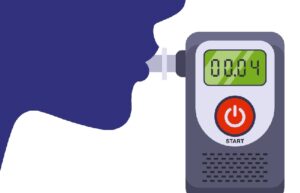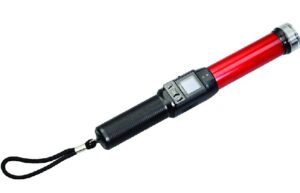Introduction
An alcohol breath analyzer, commonly referred to as a breathalyzer, is a device that should be used when determining a person’s blood alcohol content (BAC) and screening for alcohol impairment. An ABA provides a preliminary indication of alcohol intoxication and is especially important for law enforcement purposes. Police officers use breathalyzers during roadside stops when they suspect a driver may be driving under the influence (DUI) of alcohol.
Roadside breathalyzers allow for swift testing of BAC directly at the scene. They provide objective data to determine if someone’s BAC exceeds the legal limit, which can result in an arrest for DUI. Beyond law enforcement, ABAs are also valuable accident reconstruction tools that can analyze alcohol levels following a vehicle collision where alcohol may have been a factor. Some employers, hospitals, and rehab facilities also use them for alcohol screening, monitoring, and compliance testing.
What is the breath alcohol test?

A blood alcohol test, also known as a blood alcohol concentration (BAC) test, provides an accurate measure of the amount of the alcohol present in a person’s bloodstream. It works by taking small blood samples, usually from a vein in the arm, and analyzing it with specialized equipment. The blood sample is tested for ethanol content, the type of alcohol found in alcoholic beverages that is absorbed into the blood after consumption.
A blood alcohol test is considered the most reliable way to determine BAC level because it directly measures alcohol absorption into the blood rather than through one’s breath. Hospitals often use blood tests when a precise BAC reading is required, such as after a severe car accident. They may also be administered by law enforcement instead of or in addition to a breathalyzer when pressing charges related to intoxicated driving or other alcohol-related crimes. Overall, a blood test provides the most definitive assessment of alcohol intoxication compared to breath or urine samples.
How is an alcohol breath analyzer used?
An alcohol breath analyzer (ABA), commonly known as a breathalyzer, is a portable device to determine a person’s blood alcohol concentration (BAC) level through a breath sample. To use an ABA, the tested person must first blow out any air from their lungs. They are then instructed to take a deep breath and blow steadily into the device’s mouthpiece for several seconds. As the breath passes through the ABA, it analyzes the alcohol content in the vapor phase of the breath sample.
This analysis is based on the principle that alcohol evaporates in the lungs, and the concentration in the breath correlates to the level in the blood. Within a few minutes, the ABA will display the estimated BAC result. It is essential that whoever is being tested follows all instructions carefully and provides an adequate breath sample for an accurate reading. Proper usage ensures ABAs provide valid test results which can be used to determine the alcohol impairment and enforce drunk driving laws.
How does the alcohol breath analyzer work?
An alcohol breath analyzer (ABA), more commonly known as a breathalyzer, works through a chemical oxidation process to detect the presence of alcohol on a person’s breath and quantify the amount of alcohol on a person’s breath. Inside the device are two chemical reagents – potassium dichromate and sulfuric acid. When exhaling a breath sample into the ABA, it first passes through the potassium dichromate solution.
Alcohol in the breath chemically reacts with this solution. The solution then passes through the sulfuric acid. If alcohol is present, the acid changes color from yellow to green. Dark the green color, the higher the alcohol concentration. Electrodes measure this color change, directly related to the blood alcohol concentration. This result is displayed digitally outside the device within a few minutes. Through a series of chemical reactions, the ABA can effectively analyze exhaled air to provide an accurate estimate of a person’s blood alcohol content and indicate possible impairment due to alcohol.
Types of breath analysis test

The most common is the evidential breath test (EBT), which uses fuel cell sensor technology to analyze breath samples with extremely high accuracy. EBTs are generally used by law enforcement for evidentiary purposes like providing evidence of DUI.
Preliminary breath tests (PBTs) are usually small, portable devices like some breathalyzers. While not as accurate as EBTs, PBTs provide fast results and are valid for screening in field situations. They indicate if a subsequent EBT needs to be administered.
Passive breath alcohol sensors can also detect alcohol without an active breath sample by sensing vapors near the mouth. These are sometimes used at checkpoints but cannot provide evidential BAC results.
Fuel cell-based analyzers and infrared spectroscopy instruments also analyze breath through chemical reactions or light absorption properties related to alcohol concentration.
The type of equipment used depends on the accuracy needed, such as for legal procedures or medical diagnoses. However, all approved devices rely on measuring ethanol levels from breath samples to indicate blood alcohol content.
Conclusion
Alcohol breath analyzers are invaluable technological tools for road safety and criminal justice. They provide an objective, preliminary method to accurately estimate a person’s blood alcohol concentration by analyzing their breath sample. While not as definitive as blood tests, modern breathalyzers are admissible in court due to their high evidentiary reliability. Their portability and ease of use make them well-suited for roadside stops and field screening. By helping to identify intoxicated drivers swiftly, these devices undoubtedly save many lives from alcohol-related accidents each year. Continuing innovation will likely lead to even more precise and rapid breathalyzer technologies. As long as alcohol impairment remains a threat on roads, breath analyzers will be needed by law enforcement to enforce limits and deter drunk driving. Their role in public health and the detection of crime demonstrates how science can have real, positive impacts on society.
